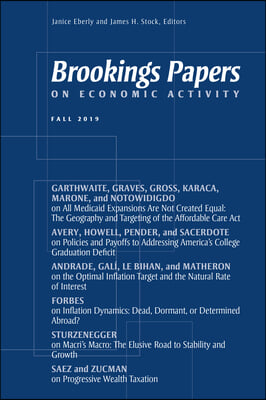Government and Private Household Debt Relief during COVID-19
IF 2.8
3区 经济学
Q1 ECONOMICS
引用次数: 65
Abstract
ABSTRACT:We study the suspension of household debt payments (debt forbearance) during the COVID-19 pandemic. Between March 2020 and May 2021, more than 70 million consumers with loans worth $2.3 trillion entered forbearance, missing $86 billion of their payments. This debt relief can help explain the absence of consumer defaults relative to the evolution of economic fundamentals. Borrowers' self-selection is a powerful force in determining forbearance rates: relief flows to households suffering pandemic-induced shocks that would otherwise have faced debt distress. Moreover, 55 percent of forbearance is provided to less creditworthy borrowers with above median income and higher debt balances—that is, those excluded from income-based policies, such as the stimulus check program. A fifth of borrowers in forbearance continued making full payments, suggesting that forbearance acts as a credit line. By May 2021, about 60 percent of borrowers had already exited forbearance while more financially vulnerable and lower income borrowers were still in forbearance with an accumulated debt overhang of about $60 billion. Exploiting a discontinuity in mortgage eligibility under the CARES Act, we estimate that implicit government debt relief subsidies increase the rate of forbearance by about a third. Government relief is provided through private intermediaries, with shadow banks less likely to provide forbearance than traditional banks.COVID-19期间政府和私人家庭债务减免
摘要:我们研究新冠肺炎疫情期间家庭债务支付暂停(债务延期)的情况。在2020年3月至2021年5月期间,超过7000万消费者的贷款总额为2.3万亿美元,进入了延期还款状态,拖欠了860亿美元的还款。这种债务减免可以帮助解释,相对于经济基本面的演变,消费者没有违约。借款人的自我选择是决定还贷率的强大力量:救助资金流向遭受流行病引发的冲击的家庭,否则这些家庭将面临债务困境。此外,55%的贷款被提供给了信用较差的借款人,他们的收入高于中位数,债务余额较高——也就是说,那些被排除在以收入为基础的政策之外的人,比如刺激支票计划。五分之一的缓期借款人继续全额还款,这表明缓期贷款起到了信用额度的作用。到2021年5月,约60%的借款人已经退出了还款期限,而经济上更脆弱、收入更低的借款人仍处于还款期限,累计债务约为600亿美元。利用《关怀法案》规定的抵押贷款资格的不连续性,我们估计,隐性政府债务减免补贴将使承付率提高了约三分之一。政府的救助是通过私人中介机构提供的,影子银行不太可能像传统银行那样提供宽免。
本文章由计算机程序翻译,如有差异,请以英文原文为准。
求助全文
约1分钟内获得全文
求助全文
来源期刊

Brookings Papers on Economic Activity
ECONOMICS-
CiteScore
10.10
自引率
0.00%
发文量
12
期刊介绍:
The Brookings Papers on Economic Activity (BPEA) is a semi-annual academic conference and journal that pairs rigorous research with real-time policy analysis to address the most urgent economic challenges of the day. Working drafts of the papers are presented and discussed at conferences typically held twice each year, and the final versions of the papers and comments along with summaries of the general discussions are published in the journal several months later. The views expressed by the authors, discussants and conference participants in BPEA are strictly those of the authors, discussants and conference participants, and not of the Brookings Institution. As an independent think tank, the Brookings Institution does not take institutional positions on any issue.
 求助内容:
求助内容: 应助结果提醒方式:
应助结果提醒方式:


